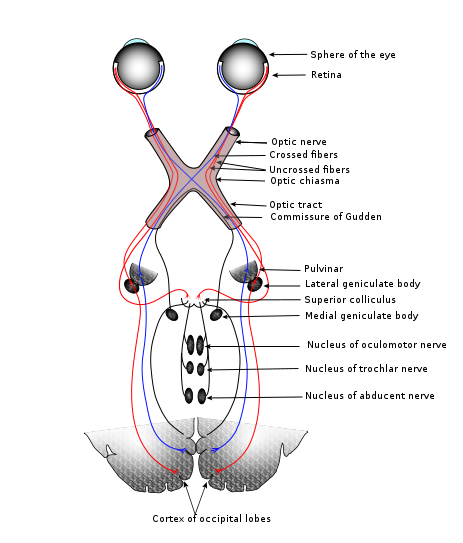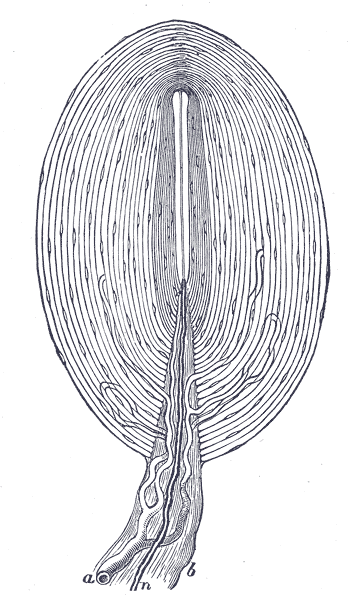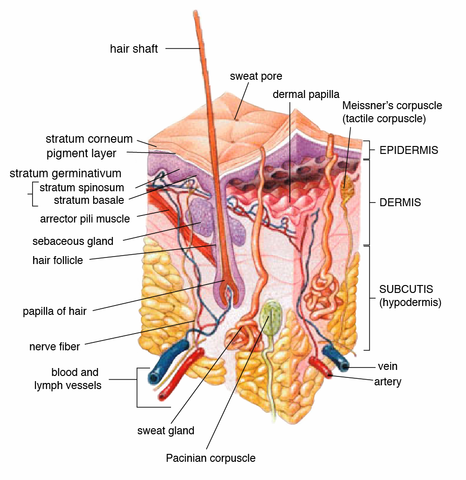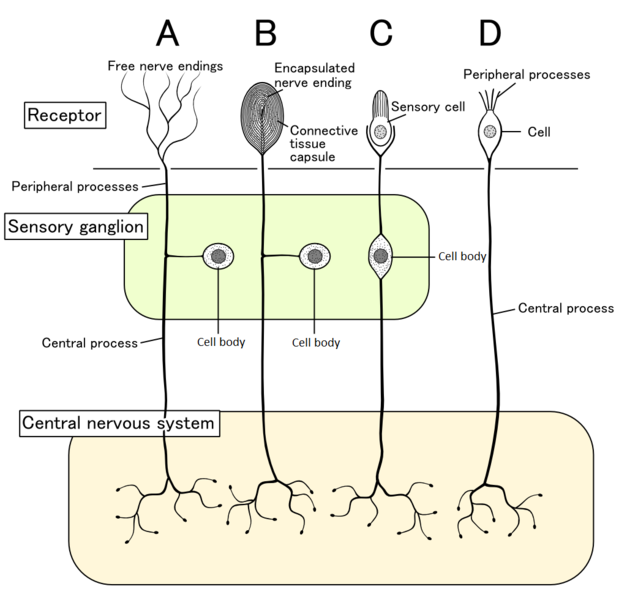SENSES AND BEHAVIOUR
Talking about making fishing nets ‘visible’ to dolphins. Dolphins, porpoises and toothed whales make sense of their environment by producing a variety of squeaks, whistles and clicks at high frequencies and then detecting echoes from nearby objects. Though sophisticated, this system can be fooled by human inventions such as fishing nets. These are too fine to reflect the sonar signals that dolphins send out and are therefore ‘invisible’.
Understanding more about how dolphins’ sensory systems work has enabled scientists to devise a way to allow fishermen to carry on their activities without being a threat to dolphins. Apparently, dolphins can detect shoals of fish by picking up the sonar reflections from their swim bladders. When fishing nets are fitted with plastic devices that look like small rugby balls, dolphins come to an abrupt halt some way from the net, firing rapid and repeated sonar at it. The plastic balls seem to ‘look’ a bit like swim bladders but are not similar enough to attract the dolphins.

Dusky dolphin. AllenMcC, CC BY 3.0
When tested in the open sea, the initial curiosity of the dolphins turned to suspicion: they avoided the nets completely and, after turning back briefly to bombard the back of the net with more sonar, they then resumed their normal activities. Scientists hope to get more funding to do larger-scale tests. If they are successful, dolphin deaths from fishing net accidents could become a thing of the past.
RESPONDING TO THE ENVIRONMENT
All living organisms are sensitive. Whole organisms and individual cells respond to physical and chemical changes in their environment. Bacteria, fungi and plants respond to their environment. Plants, for example, grow towards the light. Single-celled protoctists such as Amoeba, Paramecium and Euglena react to touch, heat and light by simply moving closer to or further away from the source. But it is in the animal kingdom that we find the widest range of body senses and the most sophisticated behavioural responses.
In this article, I will look at sensory systems in animals, concentrating on the human body senses, as illustrated by the Pacinian corpuscle, the eye and the ear, and then we go on to look at animal behaviour.
SENSORY SYSTEMS IN ANIMALS
Animals have a nervous system which receives information from the environment, decides on the best course of action and then signals the body to respond. Humans sense the environment through the body senses of touch, taste, sight, hearing and smell. We make sense of our surroundings by using our sense organs to gather information and relay it to the central nervous system. Out of the huge amount of sensory information that reaches the brain, fortunately, we deal with most of it at a subconscious level, which is just as well, since otherwise we would have no time for thoughts. Overall, the brain copes with a huge range of sensory information and uses it to decide on appropriate courses of action.
Summary of the sensory information that goes to the brain
| External stimuli | Internal stimuli | |||
Sound: volume, pitch, harmonics | Blood pressure | |||
Touch: light or heavy pressure? | Solute concentration of the blood: do we need a drink? | |||
| Internal pain: ulcer, wind, headache? | |||
Temperature: hot or cold? | Tension in muscles: posture? | |||
Pain: mild or severe? | Fatigue in muscles | |||
Movement: direction, acceleration or deceleration | Tension In bladder or rectum | |||
Direction of gravity | ||||
Smell: which one of thousands of different chemicals? | ||||
Taste: salty, sweet, sour or bitter? | ||||
|
Before going on to look at sensory systems in more detail, you will find it useful to become familiar with some important terms:
- A stimulus is a physical event, usually some form of energy change, that we can detect with our receptors. Examples include mechanical stimuli such as pressure, touch and movement of air; thermal stimuli such as heat and cold; light and chemical stimuli such as taste, smell and the concentration of carbon dioxide or oxygen in the blood. There are many factors in our environment that are not stimuli – we cannot detect them because we do not have the appropriate receptors. We do not sense radio waves or high-pitched dog whistles, for example.
- A sensation refers to a general state of awareness of a stimulus. Aristotle first identified the five senses of hearing, sight, taste, smell and touch, but we now know that there are actually many more senses than this. The skin can experience the sensations of light touch or deep pressure, heat, cold and pain. There are also the general senses of balance and body movement. Internally, the body can sense changes in blood pressure and blood levels of chemicals: and we experience hunger and thirst when we need food or fluids.
- Perception is the interpretation of stimuli by the brain. Perception of a stimulus is different from just sensing that it is there – it allows us to assess the significance of the stimulus. Many stimuli, such as the sensations from your clothes, can be ignored, to allow us to concentrate on more urgent stimuli (like the information in this article).

FEATURES OF SENSORY SYSTEMS
A sensory system must allow the following processes to take place:
- Transduction. This is the process by which a stimulus initiates a nerve impulse. Stimuli vary widely in their nature; they can be physical, light, heat or chemical, and so on. All, however, result in the generation of a nerve impulse. For example, when physical pressure is applied to the skin, sensory cells inside specialised receptors in the skin depolarise, and the physical stimulus is transduced, or changed, into the electrochemical event known as the action potential.
- Transmission. A nerve impulse is transmitted along a sensory neurone into the central nervous system (CNS). The brain recognises the strengh of a stimulus not by the size of the impulse but by its frequency. The stronger the stimulus, the higher the frequency of impulses.
- Information processing. The CNS processes information that it receives from several parts of the body and makes a decision about the best course of action to take. We have superb memories compared to other animals and so we are able to combine new sensory information with past experience before deciding on an appropriate course of action.
RECEPTORS
A receptor is part of the nervous system that has become adapted to receive stimuli. Some receptors are modified neurones, while others are separate cells connected to neurones. Some receptors, such as those in the skin, occur alone or in small groups. Others are concentrated within a specialised sense organ such as the eye or the ear.
Sensory receptors are vital. They sense the external environment and they also provide information to the CNS about the body’s internal environment. Receptors that detect changes in the outside world are positioned at or near the body surface, usually at the front end. These include the specialised sense organs, the eye and the ear, the smell receptors of the nose, and the taste receptors of the tongue. An animal’s head is basically a set of sense organs in front of a mass of nerves (the brain) that is capable of processing all the incoming information. In contrast, receptors that respond to internal stimulation, such as stretch receptors in blood vessels or muscles, are found deep inside the animal’s body.
Four types of sensory neuron. Shigeru23, CC BY-SA 3.0
Types of receptor
There are many different types of receptor in the animal world. Receptors can be classified in three ways: by the type of stimulus they respond to, by their location within the body, or by their level of complexity.
There are also two basic types of receptor, and both can be any of the classes of receptor described in the table above. Simple or primary receptors consist of a single neurone whose axon carries a nerve impulse into the CNS. The temperature and pressure receptors in the skin are both examples of primary receptors.
Classification of receptors
| Receptor name | Action | Example | |||
Classified by stimulus | |||||
| Photoreceptor | Responds to light | Eye | |||
| Chemoreceptor |
| Taste buds | |||
| Thermoreceptor | Responds to changes in temperature | Temperature receptors in skin | |||
| Mechanoreceptor | Responds to mechanical (touch) stimuli | Nerve fibres around hairs | |||
| Baroreceptor | Responds to changes in pressure | Baroreceptors in carotid artery | |||
Classified by location | |||||
| Interoceptor | Responds to stimuli within the body. | Baroreceptors in carotid artery | |||
| Exteroceptor | Responds to stimuli outside the body. | Eye and ear | |||
| Proprioceptor | Responds to mechanical stimuli conveying information about body position. | Muscle spindle | |||
Classified by complexity | |||||
| General senses | single cells or small groups of cell |
| |||
| Special senses | Complex sense organs | eye and ear |
Secondary receptors receive information from a cell that is not part of the nervous system and then pass the information on to a nerve cell for transmission to the CNS.
THE PACINIAN CORPUSCLE
When people shake hands, there is a subtle exchange of information. A firm, confident handshake communicates friendliness but ‘I’ll take no nonsense’, while a feeble, cold, clammy, loose grip says ‘I don’t really want to be here’. This is only possible because of the simplest receptor in the human body – the Pacinian corpuscle. This is a mechanoreceptor that responds to pressure or any kind of mechanical stimulus. The Pacinian corpuscle is named after Filippo Pacini, a nineteenth century Italian anatomist.
The corpuscle itself is a nerve ending surrounded by several concentric capsules of connective tissue, separated by a viscous (stiff) gel. In its resting state, the Pacinian corpuscle in cross-section resembles a dartboard with the nerve ending at the bull’s eye. Touching the hands or feet makes this epidermal receptor deform into an oval cross-section including the nerve ending. The viscous gel then moves and allows the nerve ending to resume its normal shape. If the pressure is released, the corpuscle as a whole returns to its original shape and the nerve ending is again deformed, signalling the end of the hand or foot pressure. The viscous gel flows back and everything returns back to the normal resting stage. The nerve sends the signal to the brain, alerting it to the exact location of the pressure.

HOW DO RECEPTORS WORK?
How do cells detect stimuli? How, for instance, can we distinguish between a light and a heavy touch? The answer lies in the fact that primary receptors have proteins in their cell surface membranes that are sensitive to the type of stimulus. Whatever the stimulus, transduction follows the same basic pattern. A receptor protein is activated by a specific stimulus. In turn, the protein opens or closes specific ion channels in the cell surface membrane. This change in ion movement causes depolarisation of the membrane; this is the generator potential.
If the depolarisation goes beyond the threshold level for that cell, it triggers an action potential. All receptors therefore act as biological transducers: they create action potentials in neurones in response to physical and chemical stimuli from the environment.
The greater the stimulation of the sense cell, the greater the depolarisation. Once the generator potential exceeds the threshold level, an action potential is produced and is transmitted along the axon. It is important to remember that all action potentials are of the same magnitude – you can’t have powerful and weak nerve impulses. The body is able to tell the difference between strong and weak stimuli by the frequency of the action potential created.
Receptors are very sensitive – they have to be in order to detect small changes in the environment. The human nose can detect ethanoic acid (acetic acid, the acid in vinegar) at a concentration of 5 × 1011 molecules per litre of air; a dog’s nose, though, can detect the same smell at a concentration of about 2 million times less, 2 × 105 molecules per litre.
Body senses also amplify the incoming signal. A stimulus is often quite weak – just a few photons of light when viewing a distant star for example, or a few molecules of a chemical. But the action potential travelling from the eye to the brain, for example, has about 100 000 times as much energy as the few photons of light that triggered it. A stimulus alters the electrical properties of the membrane of a receptor cell. The potential difference across the membrane is reversed from -70 mV to +40 mV. We say that it has depolarised. When this happens, a nerve impulse or action potential is transmitted along a nerve fibre.

Anatomy of the human skin with English language labels. US-Gov, Public Domain
The endocrine system also shows amplification. One molecule of the hormone adrenaline, for example, can release millions of glucose molecules in the cascade effect.
I will like to stop here for now.
Thanks for reading.
REFERENCES
https://www.livescience.com/60752-human-senses.html
https://sites.tufts.edu/emotiononthebrain/2014/10/09/emotion-and-our-senses/
https://www.bbc.co.uk/bitesize/guides/zq8bqhv/revision/1
https://www.expii.com/t/respond-to-environment-10034
https://link.springer.com/chapter/10.1007/978-1-4020-5418-1_9
https://courses.lumenlearning.com/ivytech-bio1-1/chapter/introduction-to-the-sensory-system/
http://bio1520.biology.gatech.edu/chemical-and-electrical-signals/sensory-systems-i/
https://www.sciencedirect.com/topics/psychology/incoming-sensory-information
https://kidshealth.org/en/parents/brain-nervous-system.html
https://www.jove.com/science-education/10849/what-is-a-sensory-system
https://en.wikipedia.org/wiki/Sensory_nervous_system
https://www.sciencedaily.com/terms/sensory_system.htm
https://www.sinobiological.com/what-are-receptors-sinobio.html
https://openoregon.pressbooks.pub/mhccmajorsbio/chapter/types-of-receptors/
https://courses.lumenlearning.com/boundless-ap/chapter/sensory-receptors/

A great description of the state of science publicly available on sensory stimuli.
I would add to those here discussed a sense of the passage of time, which is necessary to our interpretation of the other stimuli we perceive, and expressed in our behaviour.
Thanks!
This post has been voted on by the SteemSTEM curation team and voting trail. It is elligible for support from @curie and @minnowbooster.
If you appreciate the work we are doing, then consider supporting our witness @stem.witness. Additional witness support to the curie witness would be appreciated as well.
For additional information please join us on the SteemSTEM discord and to get to know the rest of the community!
Thanks for having used the steemstem.io app and included @steemstem in the list of beneficiaries of this post. This granted you a stronger support from SteemSTEM.
Congratulations @loveforlove! You have completed the following achievement on the Steem blockchain and have been rewarded with new badge(s) :
You can view your badges on your Steem Board and compare to others on the Steem Ranking
If you no longer want to receive notifications, reply to this comment with the word
STOPAccording to the Bible, Can the word "god" be applied to other entities?
(Sorry for sending this comment. We are not looking for our self profit, our intentions is to preach the words of God in any means possible.)
Comment what you understand of our Youtube Video to receive our full votes. We have 30,000 #SteemPower. It's our little way to Thank you, our beloved friend.
Check our Discord Chat
Join our Official Community: https://beta.steemit.com/trending/hive-182074